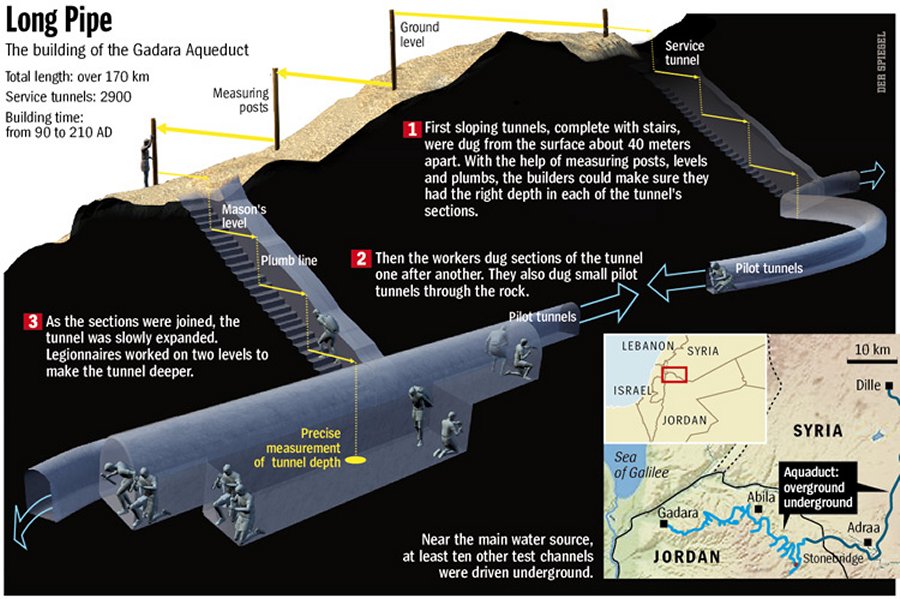Qanat Firaun -‘Canal Of The Pharaohs’ Is The Ancient World’s Longest Underground Tunnel
A. Sutherland - AncientPages.com - This underground tunnel known as Qanat Firaun ('Canal Of The Pharaohs') or simply 'Pharaoh's Watercourse' is an extraordinary example of the remarkable ingenuity of ancient Roman engineers.
Who knows, the structure may have several entrances, and perhaps one leads to the hidden labyrinth.
Flooded tunnel section of the Qanat Firaun. Image credit: Pafnutius - CC BY-SA 3.0
It is the world's longest underground tunnel, more than 100 kilometers. It was made of stone and built to connect water to cities in the ancient province of Syria. The monumental effort took more than a century, says the German researcher Mathias Döring, a hydromechanics professor in Darmstadt, Germany, who discovered it.
This aqueduct dates back to the Seleucid Era (312 BC–63 BC) and, mainly, the Roman time during the Decapolis. At that time, this city network, located in today's Syria, Jordan, and Israel, connected major and historical cities.
The aqueduct carried water for the Decapolis, improving the region's development and wealth. It was also renovated over centuries to continue its use. The derelict Decapolis aqueduct was rebuilt by the fall of the city network, causing several earthquakes of enormous extensions.
The Romans loved wasting massive amounts of water, which gurgled and bubbled throughout their cities. The engineers of the empire invented standardized lead pipes, aqueducts as high as fortresses, and water mains with 15 bars (217 pounds per square inch) of pressure.
Slant view of the antique city of Gadara, west of the present city of Umm Qais on a ridge. he red line depicts the aqueduct approaching the city from the East. In the background, Lake Tiberias, the Golan Heights and Mt. Hebron. Note pronounced erosion due to the lowering of the Dead Sea Rit. (Google Earth view from South, elevation 3x exaggerated). Image courtesy: ResearchGate
There were thousands of fountains, drinking troughs, and thermal baths in the capital alone. Wealthy senators refreshed themselves in private pools and decorated their gardens with cooling grottos.
The result was a record daily consumption of over 500 liters of water per capita (Germans today use around 125 liters).
However, when the Roman legions marched into the barren region of Palestine shortly before the birth of Christ, they had to forgo the usual splashing about, at least temporarily. It was simply too dry.
But that didn't stop the empire's clever engineers. They soon figured out a way to put things right. Researchers are currently studying a sensational canal system in the former Roman province of Syria (located in modern-day Jordan). It extends primarily underground over 106 kilometers (66 miles).
The tunnel was discovered by Mathias Döring, a hydromechanics professor in Darmstadt, Germany. Treading on moss-covered steps, he squeezes his way into dark caverns plastered with waterproof mortar. Greek letters are emblazoned on the walls, and bats dart through the air. "Sometimes we have to stop working -- there isn't enough oxygen," says the project director.
How the aqueduct worked. Credits: Der Spiegel
Qanat Firaun, "Canal of the Pharaohs," is what the locals call the weathered old pipeline. Based on rumors, gold is hidden in underground passageways that run up to 80 meters (262 feet) below the surface. However, the researcher found a better explanation.
It turns out the aqueduct is of Roman origin. It begins in an ancient Syrian swamp, which has long since dried out, and extends for 64 kilometers on the surface, and then it disappears into three tunnels, with lengths of 1, 11, and 94 kilometers. The longest previously known underground water channel of the antique world -- in Bologna -- is only 19 kilometers long.
In the limestone rock of the Acropolis Hill, on which the late Ottoman village stands, two tunnels for the water supply were excavated in ancient times. Still, the upper one can only be visited on a guided tour.
The last section, 170 km long, was built mostly underground, and the aqueduct was constructed between 90 and 210 AD during Roman times. The goal of the builders was to satisfy the enormously increasing water needs of the Decapolis towns of Abila (at Wadi Queilebh in Jordan), Adra'a (Adraha (known today as Dera'a in Syria), and Gadara (modern-day Umm Qais in Jordan), a city with a population of approximately 50,000.
It is worth mentioning that there are specific claims behind the classical city of Adraha, saying that there was an underground city, also part of the aqueduct. The city's inhabitants collected water in jars on ropes from the underground channel. It was, however, a long time ago, and no sign of the "underground city" was mentioned by Johann G. Wetzstein (1815 - 1905).
Qanat Firaun, "Canal of the Pharaohs," is what the locals call it. Image source
The tunnel system, later known as Qanat Fir'aun (Arabic: canal of the Pharaoh) and, by far, the longest-built structure of antiquity, is one of the most important engineering achievements of that era. The 380 m-long upper tunnel in Gadara was never completed, but the traces of work are visible, and one can learn and understand how the Qanat Fir'aun was carved out of the rock. Also, some entrance shafts for the construction and scoop holes of older cisterns, which the tunnel crosses, are still well preserved.
This unique construction is believed to be the work of legionnaires. The soldiers chiseled over 600,000 cubic meters of stone from the ground -- or the equivalent of one-quarter of the Great Pyramid of Cheops.
Researchers documented the 100-kilometer-long aqueduct tunnel in northern Jordan. In their paper, they wrote that "levels revealed that all tunnel sections lay at the same height. They had been built using the same construction method and appeared to belong together, thus indicating a unified and supra-regional plan. Given that Antique cities, which could have used such a water supply, were absent in the surrounding area, plus the fact that the origin of the tunnel had not been located, its interpretation as a long-distance pipeline seemed reasonable.
This colossal waterworks project supplied the great cities of the "Decapolis" -- a league initially consisting of 10 ancient communities -- with spring water. The aqueduct ended in Gadara, which is a famous place. According to the Bible, this is where Jesus exorcised demons and chased them into a herd of pigs.
The structure may have several entrances, and perhaps one of them leads to the hidden labyrinth.
Written by – A. Sutherland - AncientPages.com Senior Staff Writer
Updated on November 6, 2022
Copyright © AncientPages.com All rights reserved. This material may not be published, broadcast, rewritten or redistributed in whole or part without the express written permission of AncientPages.com
Expand for referencesMore From Ancient Pages
-
 Samurai Swords: Katana And Wakizashi And Their Long Tradition
Ancient Traditions And Customs | Aug 6, 2018
Samurai Swords: Katana And Wakizashi And Their Long Tradition
Ancient Traditions And Customs | Aug 6, 2018 -
 Ancient Romans Loved White Teeth – All Means Were Acceptable To Get Them Even Portuguese Urine
Ancient History Facts | Dec 10, 2017
Ancient Romans Loved White Teeth – All Means Were Acceptable To Get Them Even Portuguese Urine
Ancient History Facts | Dec 10, 2017 -
 Mysterious High-Energy Particles Detected In Antarctica – Evidence Of Ancient Nuclear Technology Or Something More Frightening?
Ancient Mysteries | Sep 11, 2019
Mysterious High-Energy Particles Detected In Antarctica – Evidence Of Ancient Nuclear Technology Or Something More Frightening?
Ancient Mysteries | Sep 11, 2019 -
 Legend Of Jin Chan: The ‘Golden Toad’ – Money Frog That Brings Luck And Is A Feng Shui Charm
Chinese Mythology | May 5, 2016
Legend Of Jin Chan: The ‘Golden Toad’ – Money Frog That Brings Luck And Is A Feng Shui Charm
Chinese Mythology | May 5, 2016 -
 Great Easter Traditions Passed Down Over Centuries And Widely Practiced
Ancient History Facts | Mar 25, 2016
Great Easter Traditions Passed Down Over Centuries And Widely Practiced
Ancient History Facts | Mar 25, 2016 -
 Tiger Cave: Rock-Cut Hindu Temple Complex Dated To East India’s Pallava Empire
Featured Stories | Jan 19, 2017
Tiger Cave: Rock-Cut Hindu Temple Complex Dated To East India’s Pallava Empire
Featured Stories | Jan 19, 2017 -
 Ancient Scents Can Be Reconstructed With Help Of Modern Science – Researchers Say
Archaeology | Mar 28, 2022
Ancient Scents Can Be Reconstructed With Help Of Modern Science – Researchers Say
Archaeology | Mar 28, 2022 -
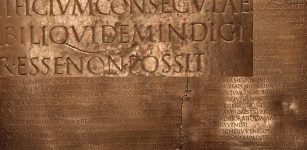 Roman Square Capitals: Prestigious Script That Delighted Human Eye With Its Elegance
Featured Stories | Sep 16, 2019
Roman Square Capitals: Prestigious Script That Delighted Human Eye With Its Elegance
Featured Stories | Sep 16, 2019 -
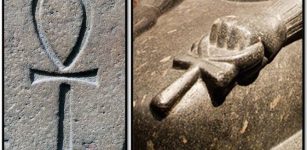 Secrets Of The Egyptian Ankh Cross And Its Energy Properties Revealed
Ancient Symbols | Feb 13, 2020
Secrets Of The Egyptian Ankh Cross And Its Energy Properties Revealed
Ancient Symbols | Feb 13, 2020 -
 How Was The Mysterious Menga Dolmen Built By Neolithic People? New Scientific Theory Presented
Archaeology | Aug 28, 2024
How Was The Mysterious Menga Dolmen Built By Neolithic People? New Scientific Theory Presented
Archaeology | Aug 28, 2024 -
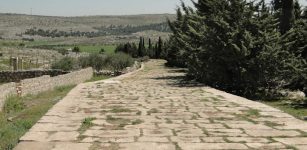 Roman Roads Laid The Foundation For Modern-Day Prosperity – New Study Claims
Archaeology | Nov 16, 2022
Roman Roads Laid The Foundation For Modern-Day Prosperity – New Study Claims
Archaeology | Nov 16, 2022 -
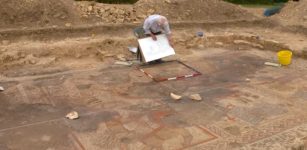 Rare Roman Mosaic Depicting The Adventures Of Greek Hero Achilles Discovered In Rutland, UK
Archaeology | Dec 4, 2021
Rare Roman Mosaic Depicting The Adventures Of Greek Hero Achilles Discovered In Rutland, UK
Archaeology | Dec 4, 2021 -
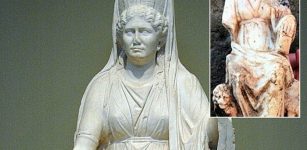 Marble 2th Century AD Statuette Of Goddess Cybele Unearthed In Bulgaria’s Plovdiv
Archaeology | Nov 5, 2019
Marble 2th Century AD Statuette Of Goddess Cybele Unearthed In Bulgaria’s Plovdiv
Archaeology | Nov 5, 2019 -
 Ireland, Wales And The Scholar Who Helped Unravel Their Celtic Connections
Featured Stories | Sep 25, 2024
Ireland, Wales And The Scholar Who Helped Unravel Their Celtic Connections
Featured Stories | Sep 25, 2024 -
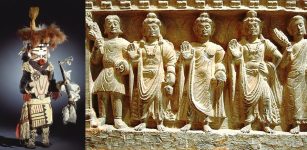 Mysterious Zuni Indians And Japanese People May Be Related – Did Buddhist Monks Reach North America In 1350?
Civilizations | Dec 26, 2017
Mysterious Zuni Indians And Japanese People May Be Related – Did Buddhist Monks Reach North America In 1350?
Civilizations | Dec 26, 2017 -
 Was Ancient Egyptian Science Inherited From A Lost Atlantean Civilization?
Ancient Mysteries | Sep 4, 2017
Was Ancient Egyptian Science Inherited From A Lost Atlantean Civilization?
Ancient Mysteries | Sep 4, 2017 -
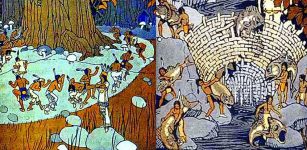 Yehasuri – Little People Of South Carolina Living In The Woods – Native Americans’ Version Of Leprechauns
Featured Stories | Feb 26, 2019
Yehasuri – Little People Of South Carolina Living In The Woods – Native Americans’ Version Of Leprechauns
Featured Stories | Feb 26, 2019 -
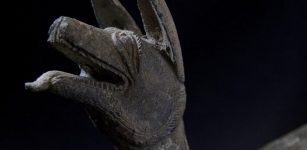 Beautiful And Unique Ancient Roman Hoard Discovered In UK
Archaeology | Oct 3, 2017
Beautiful And Unique Ancient Roman Hoard Discovered In UK
Archaeology | Oct 3, 2017 -
 Jolabokaflod – Iceland’s Wonderful Christmas Book Flood Tradition – Exchange Books As Christmas Eve Presents And Spend The Evening Reading
Christmas Traditions | Dec 25, 2024
Jolabokaflod – Iceland’s Wonderful Christmas Book Flood Tradition – Exchange Books As Christmas Eve Presents And Spend The Evening Reading
Christmas Traditions | Dec 25, 2024 -
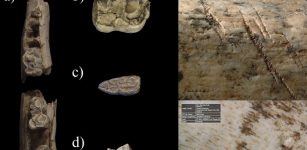 Neanderthal Hunting Camp Discovered In The Center Of The Iberian Peninsula
Archaeology | Aug 30, 2021
Neanderthal Hunting Camp Discovered In The Center Of The Iberian Peninsula
Archaeology | Aug 30, 2021



